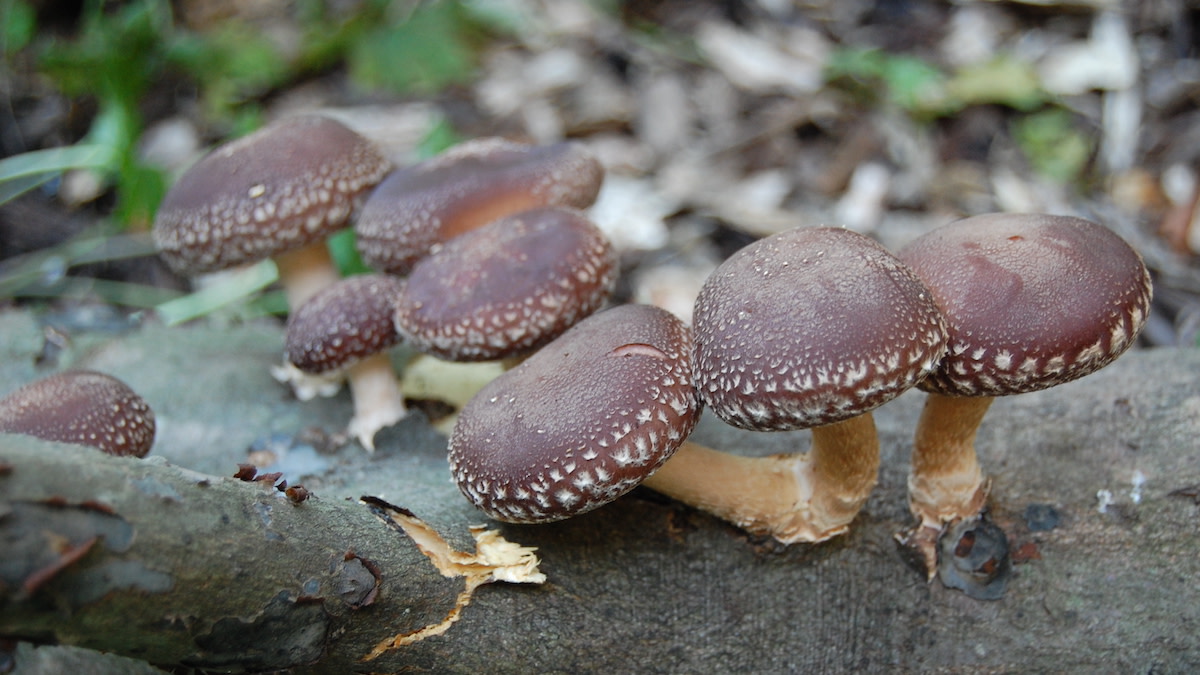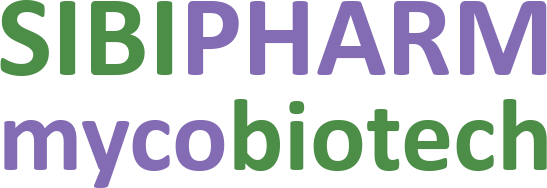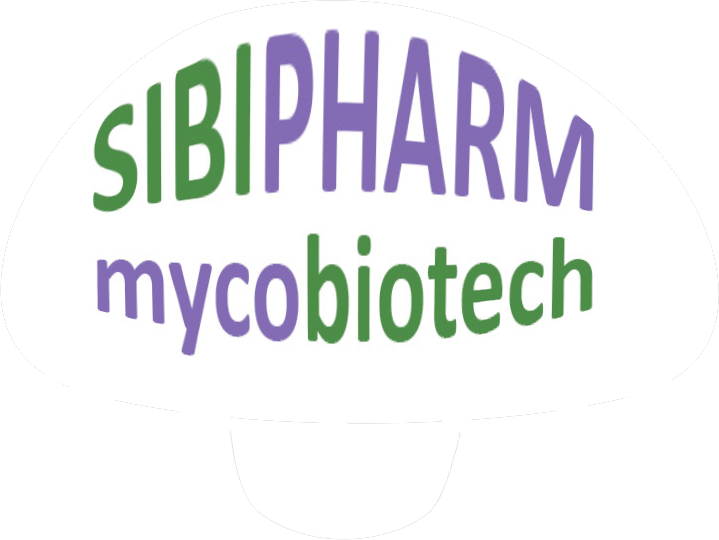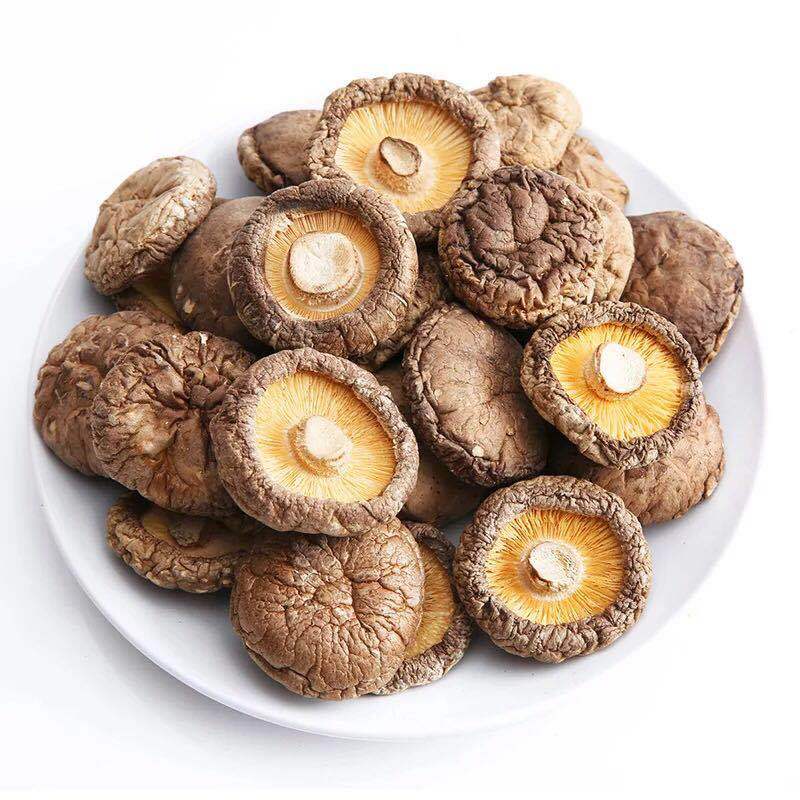Latin name: lentinula edodes
Main uses of Shiitake:
- Support of the immune system
- Antibacterial and antiviral activity
- Antioxidant protection of the body
- Strengthening the cardiovascular system
- Lowering cholesterol
- Supporting liver function
- Antitumor effect
- Improving the condition of the skin and hair
- Regulation of metabolism
- Reducing inflammatory processes
Description of the Shiitake mushroom
Shiitake (Lentinula edodes) is an edible and medicinal mushroom known for its brown umbrella-shaped cap with a diameter of 5 to 15 cm. The cap often has whitish cracks on the surface, giving the mushroom a characteristic appearance. The mushroom has white plates on the underside of the cap and a fairly dense stem. It grows on dead deciduous trees, especially oak, chestnut and beech, in subtropical and temperate regions of Asia. The mushroom is native to the forests of East Asia, where it is traditionally grown on wooden beams or stumps.
Shiitake prefers humid forests rich in organic matter, and grows both in the wild and on cultivated plantations. To thrive, the mushroom requires shade and moderate temperatures, from 10 to 30 degrees Celsius. Due to its high adaptability, the mushroom has become widespread throughout the world. Shiitake is cultivated on an industrial scale in countries such as Japan, China, South Korea and the United States. It is one of the most popular mushrooms in Asian markets.
History of the use of Shiitake in treatment
The use of Shiitake in medicine began more than 2,000 years ago in China and Japan. Ancient treatises described it as a means of prolonging life and maintaining the body’s strength. In Chinese folk medicine, the mushroom was used to strengthen the immune system and improve the circulation of Qi energy, the main life force in Eastern teachings. In Japan, shiitake was considered a “samurai mushroom” and was used to increase physical and mental endurance.

Over time, the medicinal properties of shiitake have been scientifically confirmed. In the 20th century, studies began to appear studying its active components and therapeutic effects. During World War II, Japanese doctors used shiitake as a natural immunostimulant for soldiers. In 1969, lentinan was isolated – a polysaccharide with powerful anti-cancer properties, which became the subject of numerous studies in the field of oncology.
Shiitake was also used in traditional Chinese medicine to treat colds, strengthen the liver and kidneys, and as a preventative measure. Nowadays, the mushroom is actively used in herbal medicine around the world as a means of strengthening the body and maintaining health.
Active Ingredients in Shiitake
Shiitake is rich in biologically active compounds that give it powerful medicinal properties. One of the key components is lentinan, a polysaccharide belonging to the β-glucan group. Lentinan enhances the activity of macrophages and other immune cells, stimulating the immune response and protecting the body from infections and tumor processes. Studies have shown that lentinan can inhibit the growth of cancer cells and enhance the effect of chemotherapy.
Eritadenine, an alkaloid found in shiitake, helps reduce cholesterol levels and improve the lipid profile of the blood. This component inhibits the activity of enzymes responsible for the formation of cholesterol, which makes the mushroom useful for the prevention of atherosclerosis and cardiovascular diseases.
The mushroom also contains B vitamins (B1, B2, B5, B6), which are involved in metabolism, support the nervous system and improve the condition of the skin and hair. Vitamin D2, formed under the influence of ultraviolet light, plays an important role in maintaining bone health and regulating calcium metabolism.
The mineral composition of the mushroom includes zinc, selenium, magnesium and copper. Zinc and selenium are powerful antioxidants that protect cells from oxidative stress and support the functions of the immune system. Copper compounds present in shiitake are involved in the synthesis of collagen, which helps maintain the health of the skin and connective tissues.
Another important component is ergothioneine, a natural antioxidant that protects cells from damage caused by free radicals. Ergothioneine plays an important role in maintaining mitochondrial function and protects DNA from mutations.
The mushroom also contains volatile compounds such as sulfides and thiols, which have antibacterial activity and can destroy pathogenic microorganisms.
The healing effect of Shiitake for biohackers
For biohackers, Shiitake is a valuable tool in optimizing health and prolonging an active life. One of the key effects of the mushroom is the enhancement of immune function. Lentinan, the main immunostimulant in shiitake, activates macrophages and NK cells, providing reliable protection of the body from infections, viruses and cancer cells. Regular consumption of shiitake can be an important element in the prevention of colds and in maintaining optimal functioning of the immune system.
Due to the presence of eritadenine, shiitake has a positive effect on lipid metabolism, which helps biohackers control cholesterol levels and improve the cardiovascular system. This is especially important for maintaining energy processes and improving physical endurance, which is important for those who strive to improve athletic performance.
Shiitake also helps eliminate inflammatory processes, which is especially important for recovery after intense training and stress. Thanks to antioxidant properties (ergothioneine and selenium), the mushroom protects cells from damage by free radicals, preventing premature aging of cells. This allows biohackers not only to maintain overall health, but also to slow down the aging process. Regular consumption of shiitake also improves liver function, protecting it from toxins and helping it recover more quickly from exposure to harmful substances. This makes the mushroom valuable for those who use various detoxification strategies. For cognitive optimization, shiitake helps improve concentration and memory thanks to B vitamins and other micronutrients such as zinc and magnesium, which are involved in neural regulation.
Disclaimer:
The information provided in this article is for educational and informational purposes only. It is not intended as a substitute for professional medical advice, diagnosis, or treatment. Never disregard professional medical opinion and consult with a specialist.
Scientific articles:
Roszczyk A, Turło J, Zagożdżon R, Kaleta B.
Zhu H, Hu M, Wang D, Xu G, Yin X, Liu X, Ding M, Han L.
Mallard B, Leach DN, Wohlmuth H, Tiralongo J.
Kupcova K, Stefanova I, Plavcova Z, Hosek J, Hrouzek P, Kubec R.






